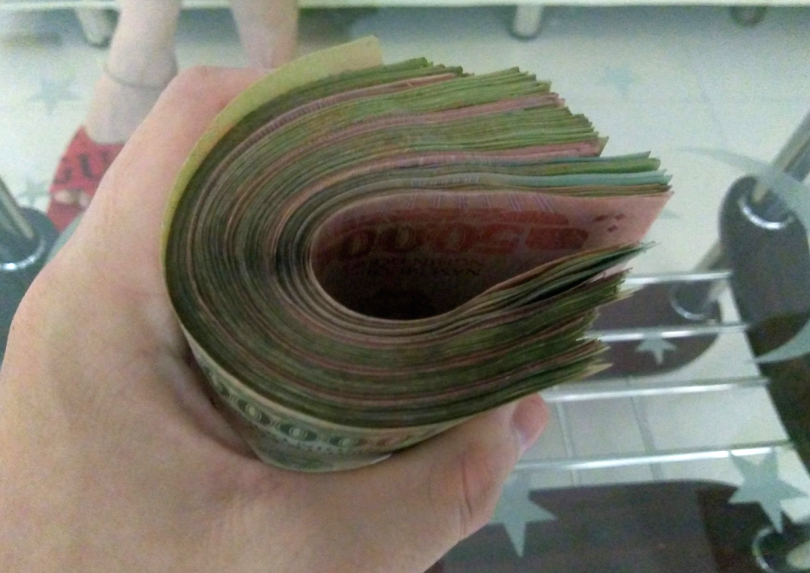What is a high interest foreign bank account? And are they a safe place to store your money?
Offshore banking is a huge topic which interests many people. Its biggest appeal? You’re able to keep money outside the USA, earning a higher rate of return on a risk-free investment. Additionally, many of these banks offer higher payouts than anything you’ll find back home. Finding promises of 7 – 20% returns is fairly common. And in some fringe countries (Iran for example), you’re earning 30% annual interest.
Today’s article looks at US bank rates and foreign opportunities. You’ll discover why other countries offer such a high rate of return, and whether or not this is a good investment.
Understanding American Money Markets And Savings Accounts
When rich people sit in cash, they’re not storing their money in a standard bank account or locking it up in a vault, Scrooge McDuck style.
Instead, they’re holding cash equivalent assets like short-term treasury bills.
According to Seth Klarman’s book Margin Of Safety (get it at the library, the Amazon edition is $800): treasury bills are “the closest thing to risk-free investing.”
If you want to invest in something like this, the easiest way to do so is through a money market account.
(Here’s A Good Video On Money Market Accounts)
Two popular accounts are the Vanguard Prime Money Market Fund ($3,000 minimum deposit, 2.51% compound yield) and the Vanguard Federal Money Market Fund ($3,000 minimum investment, 2.33% compound yield).
The return is much higher than your standard bank’s interest rate.
However, money market returns are about on par with most American high yield savings accounts. Ally offers 2% annual interest, CIT Bank has 2.45%.
When it comes to risk-free investing in America, there’s not much beyond the 3% return line.
Enter The High Interest Foreign Bank Account
Go abroad and you’ll see all kinds of crazy banking offers.
In Vietnam, many savings accounts offer 7% annual interest. Other countries go even higher. Mongolia offers 15% ROI, and Ukrainian banks reach upwards of 20%.
At face value, this sounds like a terrific opportunity.
Why play the stock market or build a business when you can easily save up $200,000, fly to Keiv, open a savings account, and enjoy $40,000 a year in passive income?
Unfortunately, it’s not that simple.
Things To Consider Before Opening A High Interest Foreign Bank Account

(16 Million Vietnam Dong, Or $700 USD)
Many countries with high interest rates have them for a very specific reason: Inflation.
According to my research, you can open a high interest savings account in Argentina, where you’ll earn a meaty 22% annual interest.
The catch?
Consumer prices rose something like 25% in the span of one year. In other words, you’re losing money.
Same goes for Vietnam.
When I moved there in 2015, 2 million Vietnam Dong was worth $96 US dollars. In 2018, 2 million Dong converted to $86.
According to the CIA World Fact Book, Vietnam’s inflation rate is just over 3.5%. Between this, taxes, and any currency conversion fees, your high interest foreign bank account is earning about what you’d make in a Vanguard money market.
I’ve never been to the Ukraine or Eastern Europe, so I can’t personally comment on their banking systems. But, some quick research shows that the Ukraine’s annual inflation hovers somewhere around 10%.
Lastly, I want to mention that many emerging markets are like the Wild West.
There are many parts of the world where “businessman” and “mobster” are interchangeable.
Robbing the neighboring country is common practice.
Vietnam had a recent issue with foreign companies taking out huge loans, then completely disappearing. And Bangladesh (another country with high interest foreign bank account opportunities), was robbed of over $1 billion in a massive international bank heist.
The odds of you being affected by something like this are pretty small, but it is a concern worth remembering.
Is Opening A Foreign Bank Account Worth It?
Investors love saying “more risk, more reward” and that’s certainly true. Even when it comes to banking.
Many foreign accounts with huge payouts have a downside too. You have to worry about inflation, exchange rates, and other issues. As much as I’d love plugging a “10 Best Countries With High Interest Savings Rates” list, it’s a little more complex than that.
If you want to invest overseas, you need to do your homework. One thing I’d recommend is this: If you already live in another country, go into one of their local banks and ask about the savings rate. Then look around at things like the price of rent, utilities, and food to see how much they’ve gone up on an annual basis.
In some cases, inflation will eat up any gains you’ve made in US dollars, but doesn’t affect you if you’re spending your money locally.
Using the Vietnamese bank account example, deflating Dong (boner joke!) prices hurt you if you’re converting to USD. You also take a loss on things like rent (which is usually tied to the US dollar). However, consumer goods (a cup of coffee at the local cafe) rarely go up in price. This means you’re still enjoying a high rate of return, as long as you keep your money in the local economy.
That said, if you’re just looking for a safe, virtually risk-free investment for your US dollars, consider opening a domestic money market or high yield savings account.